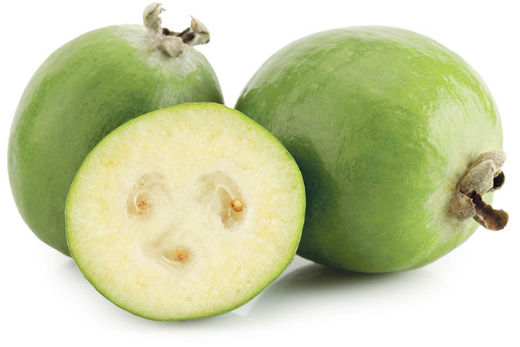An insect devastating Northland feijoa crops is just a 'bad bag of fruit' away from ruining the much-enjoyed autumn fruit in Nelson/Tasman.
The arrival of the pest guava moth in Northland and Waikato has cast a cautious shadow over the feijoa harvest season there with suggestions made the insect could thrive as far south as Nelson and Marlborough.
The Guava moth. Photo: Supplied
The abundance of feijoas in roadside stalls and home gardens in the Nelson region currently suggest domestic and commercial supplies of the fruit locally are thriving.
The male species of the guava moth.

However, Northland grower and Feijoa Growers Association representative Peter Jack says without some education and research a southern migration of the moth is a potential reality.
Jack has lost half of his potential income this harvest season to bad fruit caused by the moth and is keen to avoid a repeat in other areas.
"It certainly has the potential to make its way down there and getting research is the best we can do right now, because at the moment there is no clear answer."
"It used to be a bulletproof industry - we survived this time around but I don't know how long we can keep going now," he says.
The most likely way the moth will spread was through the movement of infected fruit to other parts of the country.
"All it'll take is a couple of bags of bad fruit in someone's car."
A native of Australia, the guava moth was first found in Kaitaia in 1997. It has largely been confined to the sub-tropical areas of the upper North Island.
The moth lays its eggs at the ends of fruit and the caterpillar larva then hatches and burrows into the fruit feeding within the ripening fruit producing excrement and encouraging the growth of fungus.
As a result the feijoa's skin is damaged and the flesh inside is brown or discoloured.
As well as the feijoa, the moth's 8mm long larvae is known to nest in other varieties of fruit and nuts including lemons, mandarins, nashi pears and macadamia.
Growers in the Nelson region are not panicking yet. They hope systems and measures in place under the Government Industry Agreement (GIA), a partnership between primary industry and government, will help stop the moth's spread. Lower Moutere grower Ian Palmer believed the government industry agreement partnerships in place would provide a robust way of dealing with any outbreak, regardless of the crop.
Under GIA, signatories share the decision-making, responsibilities and costs of preparing for – and responding to – biosecurity incursions.
"Any biosecurity incursions we have in New Zealand would have serious and damaging consequences and that flow on effect is a lot greater than perhaps people realise," he says.
"We are a export driven economy and if we get invaded by pests that our overseas markets don't have, we get excluded."
Waimea Nurseries supplies between 25,000 to 30,000 feijoa trees annually to the horticulture and garden industry nationally.
Marketing and sales manager Kate Marshall says its stock of feijoa trees has nearly sold out due to an unusual high demand from commercial customers- except in Northland.
"I had been thinking we had been selling less than our fair share to the northern customers, and now it's become apparent why," she says.
Marshall believes the comparatively cooler climate of Nelson will be somewhat helpful in reducing the chance of an invasion of the guava moth, although she says the transporting of infected fruit could prove difficult to manage.
"Hopefully it doesn't affect further south- there's potential for infected fruit to be moved from other regions and into people's gardens, that's always a possibility, but hopefully it doesn't thrive as well as it does up north," she said.
- Stuff



0 comments
Leave a Comment
You must be logged in to make a comment.